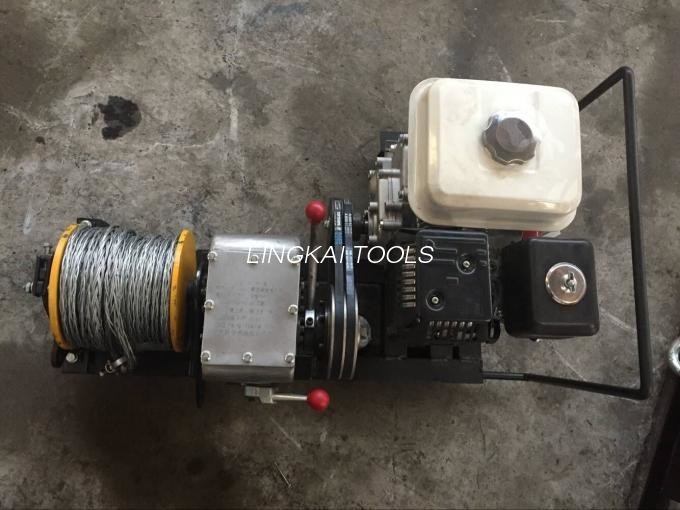Why Choose a Cable Winch Puller for Heavy-Duty Lifting and Towing?
2025-09-05
When it comes to lifting, pulling, or towing heavy loads safely and efficiently, cable winch pullers have become an indispensable tool across construction, automotive repair, industrial maintenance, and off-road recovery. Whether you are a professional operator or a DIY enthusiast, understanding the features, applications, and benefits of a reliable cable winch puller is critical.
What Is a Cable Winch Puller and Why Is It Essential?
A cable winch puller, also known as a come-along, is a manual or mechanical device designed to pull, lift, lower, or stretch heavy loads using a steel cable or wire rope. It provides mechanical leverage to handle tasks that would otherwise be impossible by hand. Its compact design, strong pulling capacity, and ease of operation make it a versatile solution for various industrial and domestic applications.
Key Applications
-
Construction Sites: For hoisting beams, positioning equipment, and tensioning cables.
-
Automotive Recovery: Pulling vehicles from ditches, mud, or snow.
-
Forestry and Farming: Uprooting tree stumps, moving logs, and dragging heavy tools.
-
Industrial Maintenance: Adjusting machinery positions and securing loads during assembly.
-
Marine and Dock Work: Hauling boats, tightening rigging, and anchoring systems.
In a fast-paced work environment where efficiency and safety matter, a cable winch puller offers precision control and mechanical advantage. Its manual leverage system allows operators to handle up to several tons of weight with minimal effort.
How Does a Cable Winch Puller Work?
Cable winch pullers operate on a simple mechanical leverage principle combined with a ratcheting mechanism to control motion. Most units feature a sturdy steel frame, a ratchet handle, and a drum equipped with a high-strength steel cable. Here's a step-by-step overview of the working process:
-
Anchor Setup – Secure the cable puller to a stable anchor point using hooks or shackles.
-
Cable Hooking – Attach the free end of the cable to the load or object.
-
Ratchet Engagement – Operate the handle to wind the cable onto the drum, which pulls the load towards the anchor point.
-
Load Control – Integrated safety pawls and locking mechanisms prevent unintentional cable release.
-
Load Releasing – Use the reverse ratchet mode to safely lower or release tension on the cable.
The result is a controlled, safe, and efficient lifting or towing process with minimal physical strain.
Technical Specifications and Product Features
When choosing a cable winch puller, it's crucial to evaluate the technical specifications that determine performance, durability, and safety. Below is an overview of our cable winch puller's key specifications:
| Specification | Details |
|---|---|
| Material | High-carbon steel body with zinc-plated finish |
| Cable Material | Heavy-duty galvanized steel wire rope |
| Pulling Capacity | 1 ton to 5 tons (varies by model) |
| Cable Length | 3m / 5m / 10m options available |
| Handle Design | Ergonomic non-slip grip with leverage advantage |
| Gear System | Dual ratchet gear for controlled pulling |
| Hook Type | Forged steel hooks with safety latches |
| Weight | Lightweight, ranging from 3kg to 10kg |
| Safety Mechanisms | Automatic load-holding brake & double-pawl locks |
| Finish | Corrosion-resistant, suitable for outdoor use |
Key Features
-
High Load Capacity: Designed for both small and large-scale pulling tasks.
-
Durable Construction: Rust-resistant materials ensure long-lasting performance.
-
Safety-Focused Design: Double ratcheting system prevents accidental load release.
-
Compact & Portable: Lightweight build makes it suitable for both on-site and fieldwork.
-
Versatile Applications: Perfect for industrial, automotive, marine, and household uses.
Choosing the correct model depends on the maximum load, cable length requirements, and safety standards for your specific environment.
Why Choose Lingkai Cable Winch Pullers?
Selecting the right manufacturer is as important as selecting the right product. Lingkai has established itself as a trusted provider of premium-grade cable winch pullers by combining robust engineering with user-focused design. Here’s why professionals and homeowners alike rely on Lingkai:
-
Superior Build Quality – Using high-carbon steel and reinforced wire ropes ensures exceptional durability.
-
Enhanced Safety Standards – Our pullers are engineered with advanced dual-pawl ratchets and automatic braking systems.
-
Customizable Options – Multiple capacity and cable length choices for different industries.
-
Corrosion Resistance – Ideal for challenging outdoor environments, including marine and forestry applications.
-
Global Compliance – Manufactured according to ISO and CE safety certifications.
-
Expert Support – Dedicated technical support and after-sales service guarantee customer satisfaction.
Frequently Asked Questions (FAQs)
Q1. How do I choose the right cable winch puller for my needs?
A: Start by determining the maximum load capacity you’ll handle. If you frequently move loads above 2 tons, select a higher-capacity model with a longer cable. Also, consider the working environment—marine or outdoor applications require corrosion-resistant finishes.
Q2. Can a cable winch puller be used for vertical lifting?
A: Most standard cable winch pullers are designed for horizontal pulling and towing. For vertical lifting, ensure the model includes a built-in load-holding brake and is rated explicitly for vertical applications to guarantee safety.
In industries where efficiency, reliability, and safety are paramount, a cable winch puller is a tool you can’t afford to overlook. From construction and automotive recovery to forestry and marine operations, this versatile device makes challenging tasks manageable and secure.
At Lingkai, we deliver premium-quality cable winch pullers engineered to perform under the toughest conditions. Our commitment to quality, innovation, and customer satisfaction has made us a trusted partner worldwide.
Contact us today to learn more about our cable winch puller solutions, request technical specifications, or get a personalized quote for your specific requirements.
